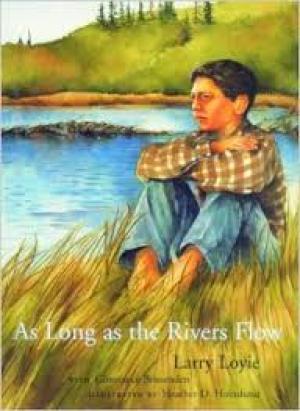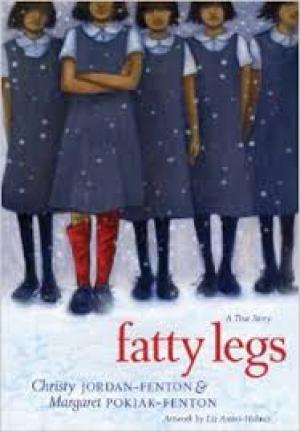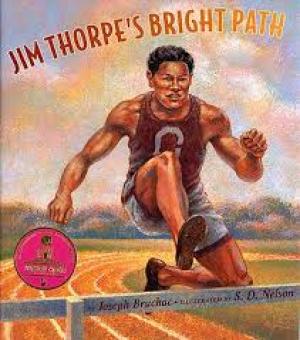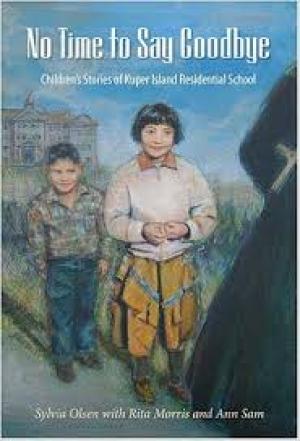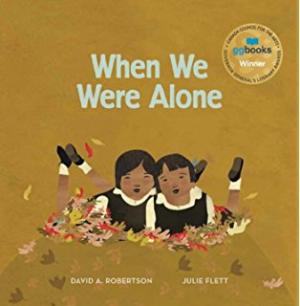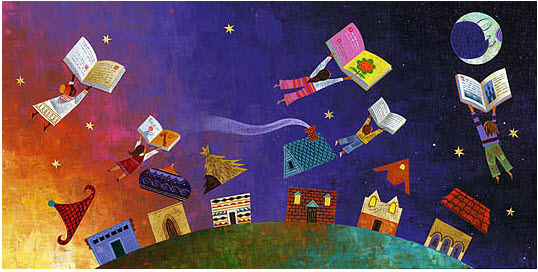Far From Home: American Indian Residential Schools
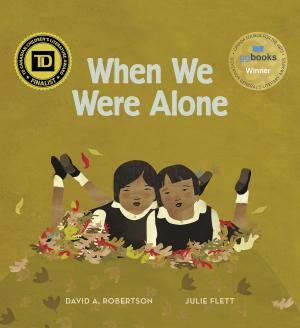
These books tell painful stories about the establishment of residential schools for Native children. Many are written by adults about their experiences or family members' experiences of forced separation from family, heritage, and language.
Note: Our related YA booklist recommends titles for older readers, as does Debbie Reese on her American Indians in Children's Literature blog.
Other Resources
Find more American Indian/Alaska Native (AIAN) titles through:
- Colorín Colorado's AIAN Booklists and Book Finder
- American Indian Youth Literature Award
- Indigenous Reads Rising (We Need Diverse Books)
- Native Children's and Young Adult Books and Resources (Cynthia Leitich Smith)
- American Indians in Children's Literature (Dr. Debbie Reese)
As Long as the Rivers Flow
Loyie shares a quiet but powerful first-person account of his last summer before he and his siblings were taken away from their family. Most of the story focuses on what was otherwise a normal seasonal routine for the Cree people of that era, with the family moving from their main cabin to their summer "camp" for a few weeks…When the children learn that they must go to the residential school or their parents will be imprisoned, and they are physically loaded onto the back of a truck by strangers, the sense of separation and loss is keenly felt. — School Library Journal
Fall in Line, Holden!
Fall in Line, Holden! follows Holden, a young Navajo Boy, through his day at boarding school. Although Holden is required to conform to a rigid schedule and strict standards of behavior, his internal life is filled with imagination and wonder. Whether he is in art class, the computer lab, or walking the hall to lunch, Holden's vivid imagination transforms his commonplace surroundings into a world of discovery and delight. Explore the world through Holden's eyes. Join him for the day, and celebrate the strong spirit of a boy who rises above the rules surrounding him.
Fatty Legs: A True Story
At the age of eight, Margaret Pokiak (Inuvialuit) set her sights on learning to read — even though it meant leaving her Arctic village. Upon her arrival at school, Margaret encountered the Raven, a black-cloaked nun who immediately disliked the plucky girl and frequently humiliated her. In spite of the Raven's cruelty, however Margaret refused to be intimidated and gave the nun a lesson in the power of human dignity. Complemented by archival photos, this inspiring first-person account of a girl's determination to confront her tormentor will linger with young readers.
Home to Medicine Mountain
In the 1930s, two young brothers are sent to a government-run Indian residential school where they are forbidden to speak their native tongue and are taught to abandon their Indian ways. In this award-winning book, Judith Lowry's illustrations are inspired by the stories she heard from her father and uncle about their journey home one summer, escaping the school as stowaways atop a train.
I Am Not a Number
When Irene is removed from her First Nations family to live in a residential school, she is confused, frightened and terribly homesick. She tries to remember who she is and where she came from despite being told to do otherwise. When she goes home for summer holidays, her parents decide never to send her away again, but where will she hide and what will happen when her parents disobey the law?
Jim Thorpe's Bright Path
Product Description: This biography portrays the childhood and school years of the immensely talented Native American athlete, Jim Thorpe (1887—1953). Born in Oklahoma, Thorpe spent his first years exploring the outdoors with his father and twin brother, Charlie. At age six, the boys were sent to an Indian boarding school, which Jim hated. He struggled academically, and his only outlet was sports.
My Name Is Seepeetza
Her Salish name is Seepeetza, but at the Indian residential school in British Columbia, she is called Martha. She hates her white name, but she is beaten if she talks "Indian." Her long hair is cut off. At the same time, the other students pick on her because she has green eyes and looks white…First published in 1992 in Canada, where it won the Sheila A. Egoff Children's Book Prize, this autobiographical novel is written in the form of Seepeetza's diary in her sixth-grade year in the 1950s. — Booklist
No Time to Say Goodbye: Children's Stories of Kuper Island Residential School
No Time to Say Goodbye is a fictional account of five children sent to Kuper Island Residential School, based on the recollections of a number of Tsartlip First Nations people. The five are isolated on the small island and life becomes regimented by the strict school routine. In spite of the harsh realities of the residential school, however, the children rise above their pain and homesickness, finding adventure in escape, challenge in competition, and camaraderie with their fellow students.
Shi-shi-etko
Shi-shi-etko has just four days until she will have to leave her family and everything she knows to attend one of Canada's Indian residential schools. She spends her last precious days at home treasuring and appreciating the beauty of her world — the dancing sunlight, the tall grass, each shiny rock, the tadpoles in the creek, her grandfather's paddle song. LaFave's richly hued illustrations complement Campbell's gently moving and poetic account of a child who finds solace around her, even though she is on the verge of great loss.
Shin-chi's Canoe
When they arrive at school, Shi-shi-etko reminds Shinchi, her six-year-old brother, that they can only use their English names and that they can't speak to each other. For Shinchi, life becomes an endless cycle of church mass, school, and work, punctuated by skimpy meals. He finds solace at the river, clutching a tiny cedar canoe, a gift from his father, and dreaming of the day when the salmon return to the river — a sign that it's almost time to return home.
When We Were Alone
When a young girl helps tend to her grandmother’s garden, she begins to notice things that make her curious. Why does her grandmother have long, braided hair and beautifully coloured clothing? Why does she speak another language and spend so much time with her family? As she asks her grandmother about these things, she is told about life in a residential school a long time ago, where all of these things were taken away. When We Were Alone is a story about a difficult time in history, and, ultimately, one of empowerment and strength.
Multicultural Literature
See more great related resources and videos in our Multicultural Literature section!

